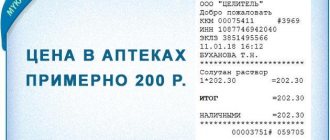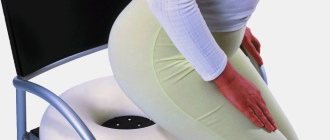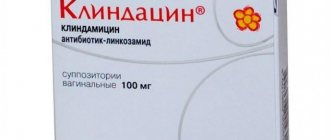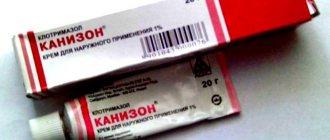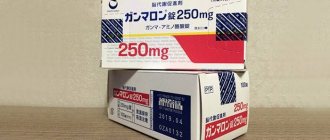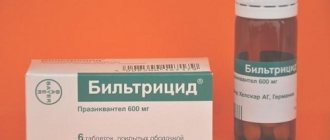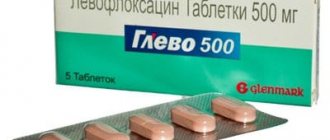Pharmacodynamics and pharmacokinetics
Glycine is an aminoacetic acid , usually found in almost all tissues of the body, most of all in the brain and spinal cord. Participates in many metabolic processes, in particular it is an important neurotransmitter . Takes part in the process of transmission of nerve impulses, blockade of alpha-adrenergic receptors . Also, the active substance takes part in the synthesis of proteins and other bioactive elements, strengthens the membrane of nerve fibers - neurons . Thus, tension decreases and neurons become less sensitive to the effects of toxins .
The drug also acts as a nootropic . It increases the number of electrical impulses in various parts of the brain, memory and thinking processes improve, and the speed of psychomotor reactions increases. In this regard, Glicised is prescribed for mental and physical fatigue.
The drug has the ability to reduce the toxic effects of various psychotropic substances by reacting with them and neutralizing them. For example, glycine reacts with phenol , converting it to hippuric acid .
Sublingual administration is considered the most effective . It does not accumulate in body tissues; it is metabolized to inactive substances.
Side effects of Glycised and the possibility of overdose
Usually, if the dosage recommendations are followed, the patient does not experience any side effects. In rare cases (with a significant increase in dose or sensitivity to glycine), the following negative reactions may occur:
- rhinitis;
- sore throat;
- dyspnea;
- angioedema (swelling of the eyes, lips, face, larynx);
- allergic reactions on the skin (redness, itching, burning, urticaria);
- conjunctivitis;
- nausea, abdominal pain;
- general weakness;
- neurological disorders, which are manifested by headaches, irritability, deterioration in concentration.
In particularly severe cases, anaphylactic shock may develop. Its signs:
- severe itching of the skin;
- a sharp decrease in blood pressure;
- vomit;
- diarrhea;
- swelling of the throat;
- breathing problems (noise when inhaling, inability to inhale);
- disruption of vital organs;
- paleness of the skin, its blueness;
- loss of consciousness.
There have been no cases of overdose while taking Glycised. This drug is not capable of causing health or life-threatening consequences, regardless of the dose in which it is taken. This is due to its metabolism - liver cells quickly neutralize glycine, promoting its breakdown into inactive, safe substances (water and carbon dioxide).
It is important to remember that when the drug is combined with tranquilizers, hypnotics and antipsychotics (neuroleptics), their effect is enhanced, which contributes to inhibition of the central nervous system.
See also:
Hopanthenic acid - instructions for use and what is it?
Indications for use
Glycised tablets are prescribed for disorders of the nervous system:
- in case of cerebral circulatory disorders ;
- for traumatic brain injuries ;
- for neurocirculatory dystonia ;
- encephalopathy of various origins;
- in conditions after previous infections and infectious diseases of the brain ;
- asthenia , withdrawal symptoms after drinking alcohol;
- with physical or mental overload;
- to improve memory and sleep quality, treat depression .
Similar drugs
There are several drugs that, like Glycised, can affect the human nervous system. Its most popular analogues:
- Glycine. Complete structural analogue of Glycised. It has all the properties, indications, contraindications and side effects.
- Cortexin. The drug belongs to the class of psychostimulants and nootropics. Contains cortexin and glycine. Prescribed as an additional remedy in the treatment of traumatic brain injuries, asthenia, encephalopathy, epilepsy, cerebral palsy and delayed psychomotor and speech development in children. Use only as prescribed by a doctor.
- Tenoten. This is a homeopathic remedy that has a sedative, anti-anxiety, nootropic, antidepressant, and antihypoxic effect. With its help, neuroses, psychosomatic diseases, and moderate central nervous system disorders are treated.
- Neurotropin. This product contains methylethylpyridinol succinate, which is an inhibitor of free radical processes. It has antihypoxic, nootropic, neuroprotective, anti-stress, anticonvulsant and anxiolytic effects. The medicine can increase the body's resistance in cases of shock, oxygen starvation, ischemia, alcohol and drug poisoning.
- Noofen. A psychostimulant based on phenibut (a derivative of gamma-aminobutyric acid and phenylethylamine). It has antihypoxic and antiamnestic effects and has tranquilizer properties.
- Persen. Plant-based sedative. It contains natural ingredients - extracts of valerian, mint and lemon balm. Used for neuroses, stress, sleep disorders.
Most of these drugs can be purchased without a doctor's prescription. But it is very important to consult with a specialist before using them, since self-medication can lead to undesirable consequences.
Instructions for use of Glycised (Method and dosage)
According to the instructions for Glycised, it is taken sublingually or buccally .
As a rule, children (from 3 years old) and adults are prescribed 1 tablet 3 times a day. The course of treatment ranges from two weeks to a month. The maximum amount of the drug taken per day is 0.3 grams.
For insomnia , take a tablet or half a tablet 20 minutes before bedtime.
When treating alcoholism , as part of complex therapy, take 3 tablets per day. The course is from two weeks to a month, repeated every 2-3 months.
In case of a stroke, the victim should be given 1 gram of Glycised within the first 3-6 hours. The next 5 days - 1 gram of the drug per day, 30 days - 600 mg per day.
Reviews about the use of Glycised
The safety and effectiveness of the drug can be judged by the reviews of doctors and patients who took it.
Doctors' opinion
- Arsenyev P.S., neurologist: “Glycised is a good glycine-based product. It has a nootropic effect, can eliminate anxiety, increase social adaptation, reduce conflict, aggression and irritability. Another advantage of the drug is its antitoxic effect. I recommend him to my patients."
- Kirilov A. G., therapist: “I prescribe Glycised for people with hangover syndrome. It copes with its symptoms very effectively, improves well-being, and restores after alcohol poisoning.”
Analogs
Level 4 ATC code matches: Trigamma
Riluzole
Huato Boluses
Vitagamma
Vitaxon
Hypoxene
Glycine
Mexiprim
Mexidol
Neurox
Cytoflavin
The closest analogue is a drug called glycine .
Other analogues: Antifront, Cytoflavin, Huato Boluses, Glutamic acid , Keltican, Mexidol, Neurotropin, Rilutek, Nicomex, Mexiprim, Cortexin, Intellan, Borizol, Armadin .
Pharmacological properties of the drug Glycised
Glycine is a non-essential amino acid (natural metabolite), is an inhibitory neurotransmitter and a regulator of metabolic processes in the central nervous system, reduces psycho-emotional stress, restores mental performance, has a neuroprotective, anti-stress, sedative effect, improves metabolic processes in brain tissue, normalizes sleep, reduces toxic effects alcohol. Not addictive. The drug easily penetrates into most biological fluids and tissues of the body, including the brain. It is quickly broken down in the liver by glycine oxidase to water and carbon dioxide. Glycine does not accumulate in tissues.
Glicised price, where to buy
The price of Glycised is about 54 rubles for 50 tablets.
- Online pharmacies in RussiaRussia
- Online pharmacies in UkraineUkraine
LuxPharma* special offer
- Glycised tab.
100 mg N50 1600 rub. order
show more
Pharmacy24
- Glycised-KMP 100 mg No. 50 tablets PAT "Kievmedpreparat", Ukraine
55 UAH. order
special instructions
There is no data on the safety of Glycised during pregnancy and breastfeeding. In such cases, the drug can be used only under the supervision of a doctor and provided that the potential benefit to the mother outweighs the possible risk to the child.
When used simultaneously, the drug reduces the toxic effects of antidepressants and anticonvulsants on the body.
Glycised enhances the effect of sleeping pills and tranquilizers.
What to replace the medicine with?
The medicine “Glycised” has analogues of different types. One of the most popular substitutes is Glycine. The medication is available in the form of tablets of 100 mg each. Instructions for use position its metabolic drug. It is often prescribed to children of different ages. The cost of 50 Glycine tablets is about 40 rubles. You can replace the declared medicine with the following medications:
- "Armadin" (relieves symptoms of withdrawal syndrome, is used for the treatment of diseases of the digestive tract).
- "Intellan" (used to normalize cerebral circulation and increase intelligence).
- “Neurotromprin” (reduces anxiety levels, is used for various brain pathologies).
Before choosing any alternative medicine, you should always consult your doctor. Nootropics and sedatives have different principles of action; some drugs are quite strong tranquilizers. You cannot take such medications on your own.
Form, description, composition and packaging of the medicine
In what form is the medicine “Glitsed” available for sale, the price of which is indicated below? The drug in question is produced in the form of white (may have a creamy tint and marbling) and flat tablets with a bevel. The active substance of this product is glycine. It also contains auxiliary elements in the form of montan wax, calcium stearate, povidone and ammonium methacrylate copolymer.
You can purchase this medicine in a cardboard box, which, in addition to the instructions, also contains blisters with the medicine.
Pharmacotherapeutic group
Consider what to do with the nervous system.
ATS code N07Х Х.
Glycine is an essential amino acid (natural metabolite), a neurotransmitter of the galmic type and a regulator of metabolic processes in the central nervous system, changing psychoemotional stress that precipitates rosum process. satiety, has a neuroprotective, anti-stress, sedative effect, enhances brain metabolism, normalizes sleep, reduces toxic effects alcohol. Doesn't cause ringing.
Easily penetrates most biological areas and tissues of the body, including the brain. The liquid is produced by glycine oxidase in the liver, breaking down into water and carbon dioxide. There is no accumulation of glycine in tissues.
Side effects
Side effects from the practical use of Glycised for the treatment of various painful conditions have not been established. There is a low probability of developing an allergic reaction, manifested by itching, hyperemia (redness) of the skin, urticaria (urticarial rashes), skin irritation, shortness of breath, allergic rhinitis (runny nose). More serious allergic manifestations cannot be excluded: Quincke's edema (rapidly developing swelling of the eyes, face or part thereof, lips, larynx - with obstruction of the airways), anaphylactic shock (manifested by severe itching of the skin, quickly spreading over the skin, a sharp drop in blood pressure, vomiting , loose stools, swelling of the larynx, dysfunction of vital organs, noisy and difficult breathing, pale or bluish skin, sharp narrowing of the bronchi and larynx, leading to acute difficulty breathing, loss of consciousness).
What effect does the drug have?
- anti-stress
- nootropic
- sedative
- tranquilizing
- sedative
- antitoxic
You can’t expect instant calm from glycized when you are stressed or emotionally tense - it is not a tranquilizer, and don’t immediately expect a hypnotic effect. If you feel mentally tired or “trapped,” it helps very effectively right away. The energy that glycine delivers to nerve cells as a building material gives internal relaxation and concentration.
This is not an instant super-pill for mental peace, glycized is a wonderful drug that helps “expel” stress from the body, but not on an emotional, but on a cellular level. Helps restore the nervous system, improves cerebral circulation, improves memory, and reduces irritability. But all these improvements as a whole will not be noticeable immediately, but gradually.
It is an excellent preventative against strokes and for improving blood circulation in various osteochondrosis.
Vitrum MEMORY is an effective assistant for mental fatigue; it cannot be called an analogue, but in some ways this drug is similar.
Drug interactions
The drug "Glitsed", analogs of which are listed below, should be used only after consultation with a doctor. You should also read the instructions. According to the latter, the combination of the medication in question with anticonvulsants and anticonvulsants, as well as antidepressants, causes a decrease in the toxic effect of the latter.
When taking Glycised simultaneously with sleeping pills, antipsychotic drugs and tranquilizers, an increase in its sedative effect is noted.
Method of congestion and dosage
The drug is administered transbucally or sublingually (in tablets or in the form of powder after sublingual tablets).
Children aged 3 years, teenagers, adults
in case of reduced rosum potency, Glycised is prescribed 1 tablet (100 mg) 2-3 times per dose for 14-30 days.
The maximum dosage is 300 mg.
Children are 3 years old and mature
for increased restlessness, emotional lability, take 1 tablet 2-3 times a day, the course of treatment is 7-14 days. If necessary, the course of treatment is repeated.
For sleep disorders, 50-100 mg is prescribed 20 minutes before bedtime or right before bedtime.
In case of ischemic cerebral stroke and impairment of cerebral blood flow
administer 1 g of the drug retrobucally or sublingually (if necessary, crush the tablet) for the first 3-6 years after the development of a stroke, then for 1-5 days, 1 g per dose, then for 6-30 days - 1-2 tablets 3 times per doba.
When treating alcoholism
The drug is prescribed as an additional dose, 1 tablet 2-3 times per dose for 14-30 days. If necessary, the treatment course is repeated 4-6 times per day.
Cost and similar means
How much does a drug like Glycised cost? Its price can please everyone. In pharmacies, such tablets (in quantities of fifty pieces) can be purchased for only 55-65 rubles.
As for similar drugs, the closest and most similar in action is a drug such as “Glycine”.
Also, “Glycised” can be replaced with “Antifront”, “Cytoflavin”, “Keltikan”, “Mexidol”, “Neurotropin”, “Rilutek”, “Nikomex”, “Cortexin”, “Mexiprim”, “Intellan”, “Borizol” and "Armadin".

